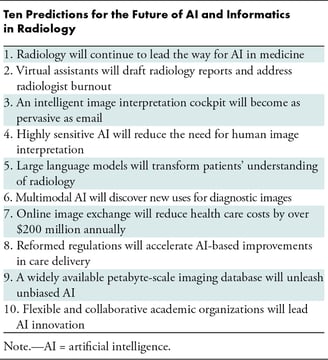🔮How to develop and evaluate clinical AI predictive models, predictions for the future of clinical AI, and more
2nd November, 2023
Kevin Sam
2 min read
Hiya 👋
We’re back with another edition of the digital pharmacist digest!
Here are this week's links that are worth your time.
Thanks for reading,
Kevin
📖 What I'm reading
Road map for clinicians to develop and evaluate AI predictive models to inform clinical decision-making
🤖 Artificial Intelligence and 🩺💻 Health Informatics
The nine stages included:
1. clarifying the clinical question or outcome(s) of interest (output)
2. identifying appropriate predictors (features selection)
3. choosing relevant datasets
4. developing the AI predictive model
5. validating and testing the developed model
6. presenting and interpreting the model prediction(s)
7. licensing the AI model
8. maintaining the AI predictive model
9. and ongoing evaluating the impact of the AI predictive model.
"The introduction of an AI prediction model into clinical practice usually consists of multiple interacting components, including the accuracy of the model predictions, physician and patient understanding and use of these probabilities, expected effectiveness of subsequent actions or interventions and adherence to these. Much of the difference in whether benefits are realised relates to whether the predictions are given to clinicians in a timely way that enables them to take an appropriate action"
An AI revolution is brewing in medicine. What will it look like?
🤖 Artificial Intelligence and 🩺💻 Health informatics
"AI tools for medicine serve a support role for practitioners, for example by going through scans rapidly and flagging potential issues that a physician might want to look at right away. Such tools sometimes work beautifully. Perchik remembers the time an AI triage flagged a chest CT scan for someone who was experiencing shortness of breath. It was 3 a.m. — the middle of an overnight shift. He prioritized the scan and agreed with the AI assessment that it showed a pulmonary embolism, a potentially fatal condition that requires immediate treatment. Had it not been flagged, the scan might not have been evaluated until later that day.
But if the AI makes a mistake, it can have the opposite effect. Perchik says he recently spotted a case of pulmonary embolism that the AI had failed to flag. He decided to take extra review steps, which confirmed his assessment but slowed down his work. “If I had decided to trust the AI and just move forward, that could have gone undiagnosed.”
Are you enjoying this digest? It would mean a lot if you'd consider forwarding it on to someone that you think would also appreciate it!
Stay up-to-date with the Digital Pharmacist Digest
Any comments provided are personal in nature and do not represent the views of any employer


